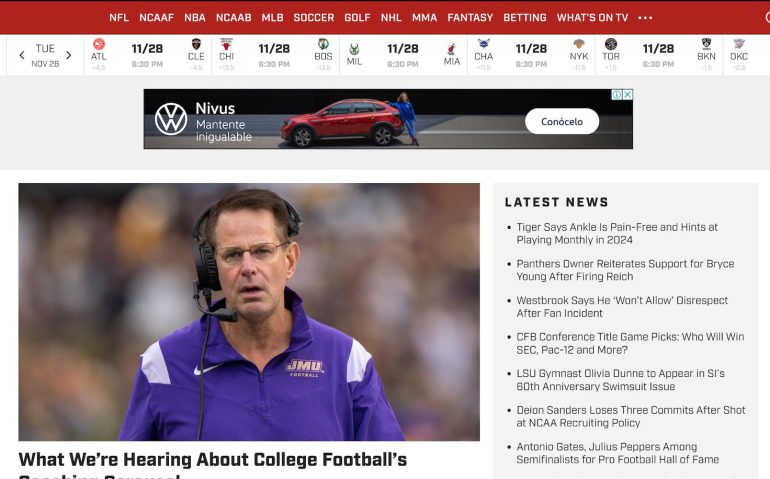Sports Illustrated , a renowned publication founded in 1954, recently found itself in a massive controversy due to its use of artificial intelligence (AI) in content generation. The revelation that several articles were penned by fictitious, AI-generated authors, as reported by Futurism, has stirred significant discussions about the ethical implications of AI in journalism.
Investigations revealed two writers, “Drew Ortiz” and “Sora Tanaka,” identified with AI-generated headshots and biographies. Their articles, exhibiting the characteristic awkwardness of AI-created content, raised doubts about the authenticity of their identities. This use of AI in content creation, under the guise of human writers, has sparked concerns about transparency and integrity in digital publishing.
Sports Illustrated’s Initial Response
Following these revelations, Sports Illustrated’s parent company, Arena Group, initially denied the allegations of publishing AI-generated articles. However, they later conceded to removing the contentious pieces for an internal investigation. Arena Group attributed the reports to “licensed content” from an external company, AdVon Commerce, suggesting a lack of direct involvement in the AI-generated content.
Broader Implications in Digital Publishing
This incident at Sports Illustrated is not isolated in the digital publishing world. Significant publishers like Gannett and tech publication CNET have faced similar issues with AI-generated content, pointing to a growing trend and the accompanying challenges. The increasing use of AI tools like ChatGPT in content creation has raised alarms about the potential for spreading substandard and plagiarized material across the internet.
The Sports Illustrated AI controversy underscores the delicate balance between embracing technological advancements and maintaining journalistic integrity. As AI continues to reshape the landscape of content creation, the necessity for ethical guidelines and transparency becomes ever more pressing. The larger question is whether using AI is a good idea.
The Response from the Journalism Community
The SI Union, representing the voice of Sports Illustrated’s staff, took to social media to express their concerns about the use of AI in journalism. Their stance highlights the broader apprehensions within the journalistic community about AI’s role in content creation and its impact on journalistic standards and employment.
The core of the Sports Illustrated AI controversy lies in the ethical questions it raises. The use of AI-generated content, especially when masked behind fabricated author profiles, challenges the principles of transparency and trust, which are fundamental to journalism. This incident has prompted a re-evaluation of the ethical boundaries and responsibilities of publishers in the age of AI.
Sports Illustrated’s AI debacle is a learning opportunity for the publishing industry. It emphasizes the need for clear policies and ethical guidelines governing the use of AI in journalism. As AI technology continues to evolve, publishers must navigate the complexities of integrating AI tools responsibly, ensuring accuracy and maintaining the trust of their readership.
Our response to today’s story from @futurism reporting that The Arena Group has published AI-written stories by fake people under the Sports Illustrated name: pic.twitter.com/QcR4iGOi5w
— Sports Illustrated Union (@si_union) November 27, 2023
The challenge for publications like Sports Illustrated is finding a balance between leveraging AI for efficiency and upholding journalistic integrity. This includes being transparent about the use of AI, ensuring the accuracy of AI-generated content, and preserving the human touch essential to quality journalism.
The Sports Illustrated AI incident is a watershed moment, prompting a critical examination of AI’s role in journalism. As the industry moves forward, the focus must be on developing ethical frameworks and guidelines that harness AI’s potential while safeguarding journalism’s core values. The future of digital publishing in the AI era hinges on this delicate balance between innovation and integrity.







